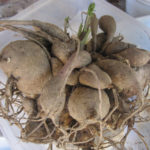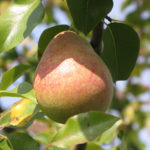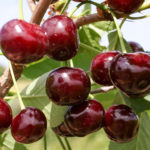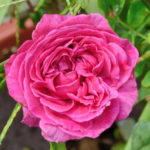Plum variety Stanley (Stanley)
Stanley is an old late-ripening variety of domestic plum (Prunus domestica) of American selection, which has not lost its popularity to this day. Bred in 1912 at the New York State Agricultural Experiment Station (Geneva, Ontario) through crossing the famous French variety D'Agen with the American Grand Duke. Belongs to the Hungarian group. Synonyms: Stanley, Stanley. The author of the variety is Richard Wellington.

In 1983, the variety was added to the state register of the Russian Federation for the North Caucasus region. Recommended for cultivation in the south of Russia.
Trees of medium vigor, about 3 meters high, with a sparse round crown. The stem is dark gray in color, straight, slightly cracking, flaky type (medium flaking). Shoots are weakly ringed, not pubescent, crimson-purple in color; internodes of medium length (3 - 3.5 cm). Vegetative buds are small (0.21 - 0.3 cm), spaced, cone-shaped, with a pointed tip. Leaves of medium size (average length - 7.5 cm, average width - 5.4 cm), bright green color, rounded, with a blunt-pointed tip and a rounded base; the edge of the leaf is bordered by a single-crested serration, the denticles are of medium size. The leaf blade with a glossy surface, medium-concave, loose consistency, no pubescence on the upper side, the lower side is slightly pubescent (fleecy along the central and lateral veins). Petioles are of medium length (up to 1.9 cm), anthocyanin color. The glands are of medium size, sessile, yellow-green; on each sheet there are 1 - 2 pieces. Stipules are pale green in color, medium length (0.8 - 1 cm), lanceolate. 1 - 2 flowers are formed from the bud.
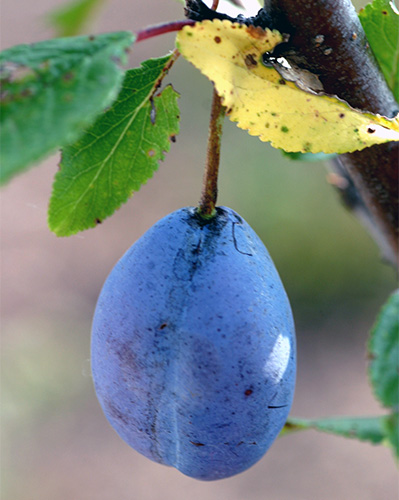
The flowers themselves are very large (up to 3.1 cm in diameter), saucer-shaped. The petals are large (length - 1.3 cm, width - 1 cm), ovoid, with a rounded top and wavy edges, white in color, slightly closed, there is no corrugation. The buds are white. Numerous stamens: 28 pieces on each flower. Filaments are straight, from 0.7 to 1.2 cm long. The pistil is 1.1 cm long, the column is straight, 1 cm long. The stigma of the pistil is rounded, located above and below the level of the anthers. The anthers themselves are yellow. No pubescence on the ovary. The calyx is bell-shaped, not pubescent. Sepals are 0.6 × 0.3 cm in size, oval in shape, without serration and pubescence. Pedicels are very long (2.1 cm), not pubescent.
The formation of fruit formations occurs on bouquet branches and on last year's growth.
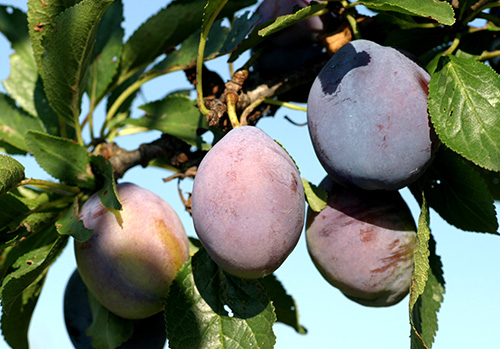
Large and very large Stanley plums (minimum weight - 30 - 35 g, average - 40 - 45 g, the largest specimens reach 50 g; height - 5.3 cm, width - 4 cm, thickness - 3.7 cm) , unequal, obovate, with a rounded apex and an elongated (with a neck) base. The main color of the fruit is green, the integumentary color is solid dark purple. The peel is of medium thickness, loose consistency, covered with an average number of subcutaneous dots of brown color and a thick waxy bloom, pubescence and streaks are absent; it is difficult to separate from the pulp. Funnel of medium depth. The abdominal suture is medium, well pronounced, does not crack. Peduncles 0.25 cm thick, 2 cm long.The seeds are large (weight - 1.8 g; 3.3% of the total weight of the pulp), elongated-oval (length - 3.2 cm, width - 1.5 cm) , with a pointed apex and an elongated base, light brown in color, the surface is medium lumpy. The separability from the pulp is good. The dorsal suture is medium open. The central rib is moderately pronounced, the lateral ribs are clearly visible. The keel is sharp, medium in size.
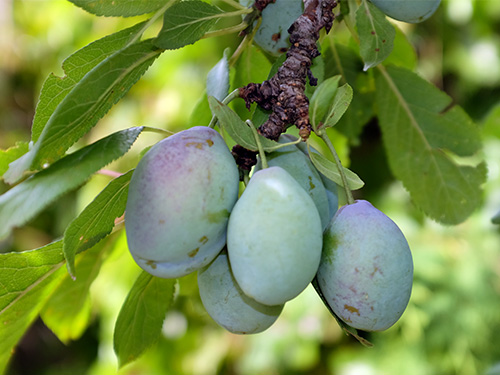
The pulp is yellow, grainy-fibrous consistency, dense, aromatic, on the palate - sweet with a slight sourness, average juiciness. The color of the cavity is the same color as the pulp. The chemical composition of fresh fruits is as follows: dry matter - 21.6%, the amount of sugars - 13.8%, acids - 0.72%, pectin substances - 1.02%, polyphenols - 460 mg / 100 g, ascorbic acid - 8, 9 mg / 100 g; sugar-acid index - 19.17%.
Stanley variety of universal use: suitable for fresh consumption, drying, canning. The assessment of canned products is high: frozen fruits - 4.8 points, compote - 5 points, juice with pulp - 4.6 points, prunes - 4.5 points, pickles - 4.5 points. Tasting assessment of fresh plum taste - 4.7 - 4.8 points. In Europe and the USA, 80 - 90% of prunes are produced from the Stanley plum and its successor - the Amers variety (Standard x Stanley).

Flowering takes place in medium terms - around mid-April. Fruits ripen later - early September.
The trees begin to bear fruit, as a rule, in the 4th - 5th year. Yields are high, regular (up to 60 kg / tree or 18 t / ha). However, the trees of this plum are demanding on soil fertility.
The variety is highly winter-resistant. Frost resistance zone - up to minus 34 ° C. Drought tolerance is average. Resistance to red spot (polystygmosis) and sharke (smallpox) is high, to gray rot (moniliosis) - not high enough. Also trees can suffer from plum aphids.
The variety is partially self-fertile, so it produces good yields without pollinators. The best pollinators for him are Bluefri, Empress, Chachakskaya Lepotika, Chachakskaya best, etc. It is worth noting that Stanley himself is a good pollinator for other varieties blooming in the same period.
The main advantages of the Stanley plum include: high quality of fruits, large-fruited, yield and winter hardiness.
The main disadvantage is the susceptibility to pests and fungal diseases.
